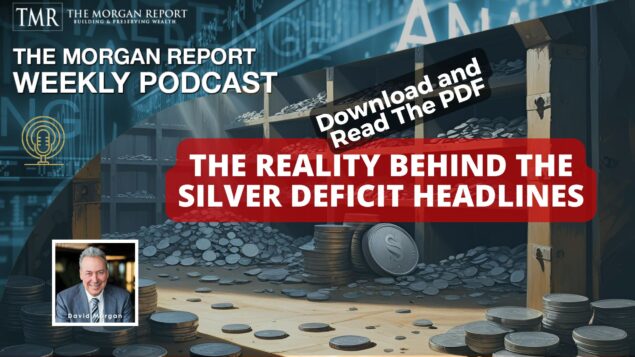Is The Silver Deficit Real?
What The Silver Institute Reports
- Source of data: The Silver Institute commissions Metals Focus to compile its World Silver Survey.
- Deficit definition: They look at “physical market balance” – mine production + recycling minus fabrication demand (industrial, jewelry, silverware, and physical investment demand).
- When demand exceeds supply, they call it a deficit.
- Key point: This deficit is physical metal, not paper contracts, and – it assumes above ground inventories are drawn down to meet the gap.
- For recent years (2021-2024), they’ve reported record physical deficits – in the 200-250 million ounce range – the largest in decades.
Example:
If annual mine + recycling = 1.0B oz, but demand = 1.2B oz ? 200M oz deficit.
The shortfall, they say, comes from above-ground stocks (coins, bars, LBMA vaults, COMEX inventories).
What CPM Group Reports
- Source of data: CPM runs its own independent supply/demand and stockpile models.
- Deficit definition: Christian says there is no structural deficit, because when you include all silver flows – especially movements from extensive above-ground inventories (private, industrial, government, ETFs, and unreported stocks) – the market balances.
- His view: silver demand never exceeds total available silver; if stocks are drawn down, it’s not a “deficit,” it’s simply disinvestment from holdings.
- CPM includes opaque sources like old silverware melting, industry scrap not in official recycling stats, and non-exchange inventories in its supply side.
Example:
Same 1.0B oz mine + recycling + 200M oz from existing stockpiles = 1.2B oz total supply ? balanced market, no deficit.
Why the Numbers Clash
- Accounting for above-ground stockpiles:
- Data transparency:
- Different time horizons:
- Silver Institute: Right, if you define deficit as current year mine + recycling < current year demand. This is the perspective most investors see - and it makes for more dramatic headlines.
- CPM: Right, if you define deficit as only occurring when total demand exceeds total available supply, including above-ground stocks. In this sense, there hasn’t been a “true” shortage – metal still comes from somewhere to fill the gap.
- The Silver Institute deficit signals that new mine output is insufficient to meet current demand, which is bullish for long-term prices if stockpiles keep falling.
- The CPM no-deficit view signals that price spikes may be delayed until above-ground inventories are exhausted – but once they are, the shortage becomes real and dramatic.
- SI is warning: “We’re eating into the pantry every year.”
- CPM is saying: “Yes, but the pantry is still stocked.”
o Silver Institute treats drawdowns from inventories as proof of a deficit.
o CPM treats those inventories as part of the total supply, so no deficit exists as long as stocks can be tapped.
o Metals Focus’ numbers are more public-facing but rely on best estimates for unreported flows.
o CPM’s data is more granular in terms of private & industrial stocks, but a lot is proprietary.
o SI focuses on annual flow vs. annual demand.
o CPM looks at the whole system, including long-term above-ground reserves
Who’s “Right”?
Both are correct within their frameworks:
The Investor’s Takeaway
In other words –
The real inflection point is when the pantry shelves are bare, and that’s when the market goes parabolic.




